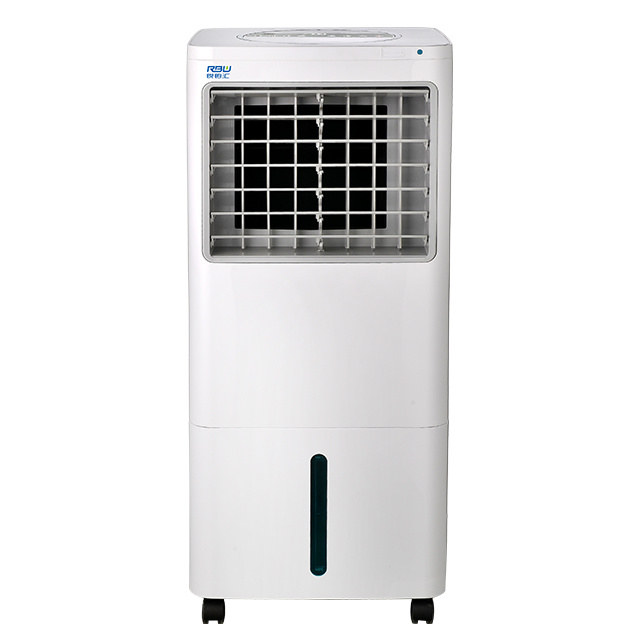News
Introduction to Industrial Evaporative Coolers
Time:
2025-08-11
Working Principle
Industrial cooling fans operate based on the core principle of evaporative cooling. When the fan is started, the built-in water pump will deliver water to the water distributor at the top, allowing the water to evenly moisten the subsequent wet curtain. At this point, the negative pressure generated by the operation of the fan will draw hot outdoor air into the fan. As the hot air passes through the moist wet curtain, the water evaporates rapidly and absorbs a large amount of heat from the air, thereby significantly reducing the temperature of the air entering the room and achieving a cooling effect.

Structural Components
Wet Curtain: High-quality wet curtains are characterized by strong water absorption, high evaporation efficiency, and a long service life. - Fan: The performance of the fan directly affects the air supply distance and air volume of the cooling fan. Generally, high-efficiency and low-noise axial flow fans or centrifugal fans are adopted.
Water Pump System: Composed of a water pump, water pipes, and a water distributor, its main function is to deliver water from the water tank to the top of the wet curtain, ensuring that the wet curtain can be evenly moistened.
Water Tank: Used to store cold water and provide a water source for the wet curtain.
Control System: Including a control panel, sensors, and control circuits, etc. The control panel is equipped with function buttons such as wind speed adjustment, timing on/off, and swing control. Some high-end models are also equipped with temperature sensors and humidity sensors, which can automatically adjust the operating status of the equipment according to the indoor ambient temperature and humidity to achieve intelligent control.
Shell: It plays a role in protecting internal components and enhancing aesthetics. It is generally made of corrosion-resistant and anti-aging plastic or metal materials, with good sealing and ventilation.
Applicable Scenarios
Factory workshops: In high-temperature production workshops, industrial cooling fans can effectively reduce the indoor temperature, create a comfortable working environment for workers, reduce fatigue and accident rates caused by high temperatures, and improve production efficiency.
Logistics and warehousing: Goods stored in warehouses are prone to deterioration or damage in high-temperature environments. Industrial cooling fans can lower the temperature in warehouses, maintain a suitable storage environment, and extend the shelf life of goods.
Public facilities: Such as stadiums, exhibition halls, large shopping malls and other crowded public places.
Outdoor places: In some outdoor work areas, such as construction sites, open-air catering areas, etc.
Usage Notes
1. Before using it for the first time, check whether the water tank is full, the wet curtain is moist, and all components are firmly installed.
2. During operation, avoid putting foreign objects into the machine to prevent damage to the fan and other components.
3. Adjust the wind speed and running time reasonably according to the indoor temperature and humidity to achieve the best cooling effect and energy-saving purpose.
4. When the ambient temperature is low or the humidity is high, the cooling function can be turned off, and it can be used only as an ordinary fan.
Daily Maintenance
1. Clean the water tank regularly: Generally, the water tank should be cleaned at least once a week to prevent bacteria and algae from growing in the water, which may affect water quality and the service life of the equipment. When cleaning, first drain all the water in the tank, rinse the inside of the tank with clean water, and if necessary, wipe it with a neutral detergent.
2. Clean the wet curtain: After long-term use, the wet curtain will accumulate dust and impurities, which will affect the cooling effect. The wet curtain can be rinsed with clean water regularly to wash away the surface dirt.
3. Inspect the water pump and fan: Regularly check the operation of the water pump for water leakage, abnormal noise and other problems to ensure that the water pump supplies water normally. At the same time, check whether the fan blades are loose or deformed and whether the motor operates normally. If there is any abnormality, repair or replace it in time.
4. Check the circuit regularly: Inspect circuit components such as the control panel and wires for aging and damage, ensure that the circuit connections are firm, and avoid safety accidents such as electric leakage.
Related News
Share to
Are you ready?
Start your project now!








